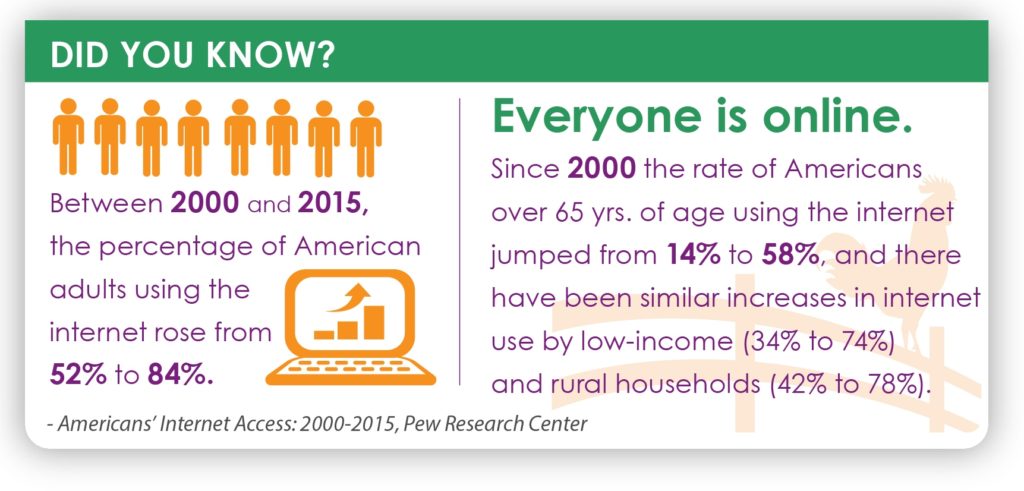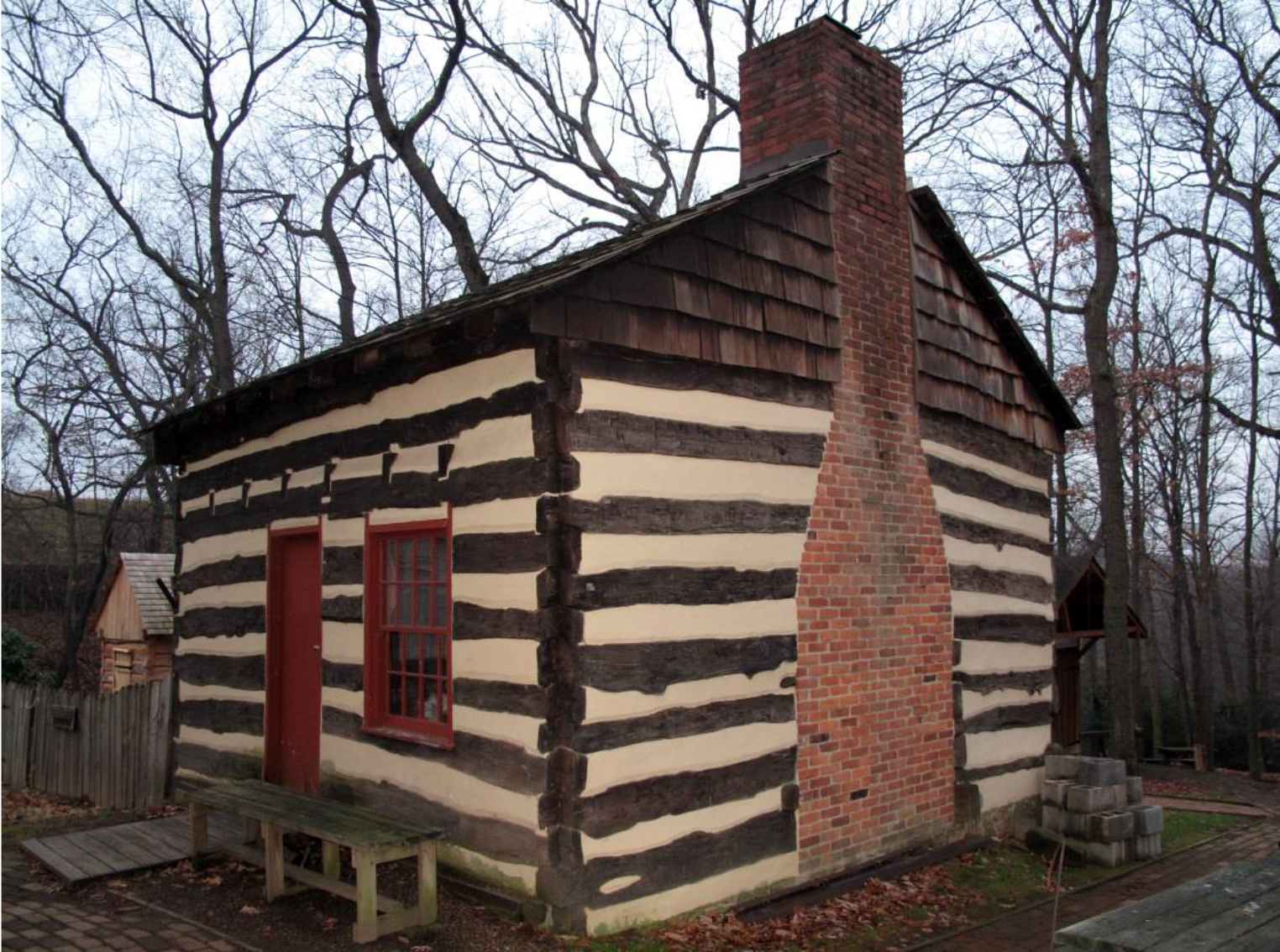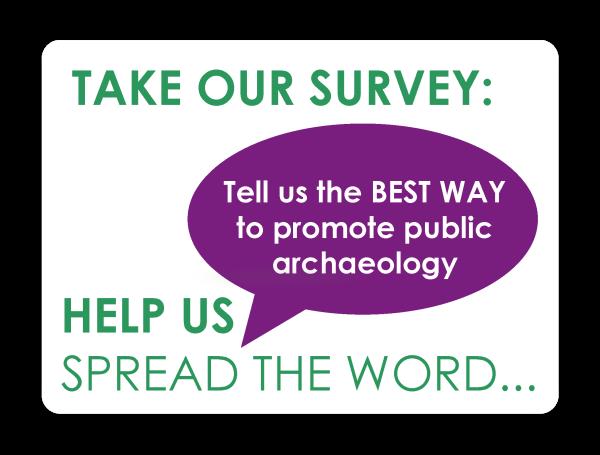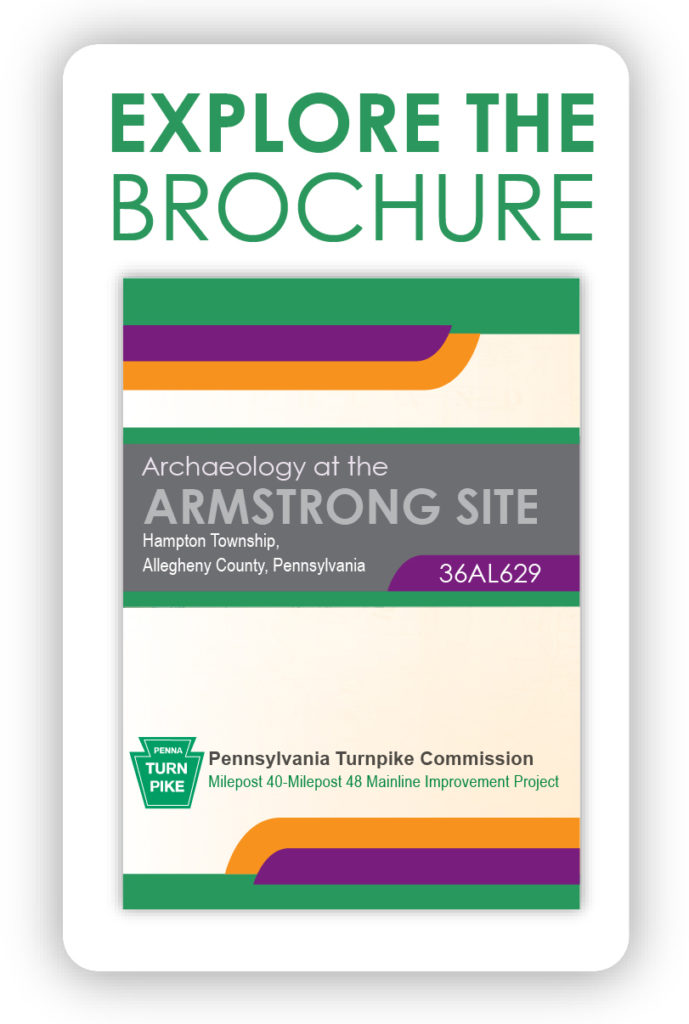Fostering a public appreciation for historic resources and archaeology is one of the most important keys to protecting our history.
Unfortunately, many cultural resources professionals struggle with how to make their work accessible and interesting to the general public. In this blog post, we take on this challenge and announce the launch of a non-scientific, but very intriguing experiment to explore how the public responds to different avenues of communication – brochures, social media and web tools.
How did this all begin? It started with a transportation project and an archaeological site.
In 2013, the Pennsylvania Turnpike Commission (PTC) began a project to widen eight miles of the existing Turnpike mainline between the Butler Valley Interchange (Exit 39) and Allegheny Valley Interchange (Exit 48) in Allegheny County, PA. This project also included the replacement of six overhead bridges. As part of the environmental review process, archaeological investigations identified and recorded 12 sites within the project area. One of the sites, the Armstrong Site, was eligible for listing in the National Register of Historic Places.
The Armstrong Site (36AL629) is a historic farmstead in Allegheny County that was first occupied in the late 19th century by the Armstrong family. Excavations at this site yielded over 28,500 historic artifacts. Among the recovered artifacts were household items and architectural remains. Many of the artifacts hinted at everyday life and consumer choice during the late 19th to early 20th century. This part of southwestern Pennsylvania where the site was located became industrialized and urbanized during the mid-19th century, and as a result, the demand for local produce became increasingly important to the local markets. The small-scale farmers of the region could easily transport products to markets in the Pittsburgh area.

Archaeological investigations discovered clues about 19th century Pennsylvania farm families. The George Armstrong House is now located at the Depreciation Lands Museum.
It was determined the site would be adversely impacted as a result of the project, and federal permits triggered a Section 106 review, which requires agencies to take into consideration the effect a proposed project may have on historic properties or sites.
The Old and the New: Mitigation Commitments
As part of the mitigation commitment for impacting the archaeological site, the PTC and the PA State Historic Preservation Office (PA SHPO) agreed to develop an informational brochure to share the history of the Armstrong Site and the outcome of the excavations. The brochure was developed and a distribution plan was prepared to share copies with regional museums, historical societies, and libraries.
In 2013, production of a pamphlet or booklet was accepted as an effective communication tool and a common mitigation commitment for transportation projects. Now, the PA SHPO and project team members want to learn if there are better opportunities to enhance public outreach through the use of technology. New communication tools such as social media, video presentations, interactive tours of archaeological sites and other educational resources may provide a more fluid and farther-reaching view of public archaeology than a printed pamphlet or booklet.
Through consultation, the PA SHPO, the PTC and McCormick Taylor decided to launch a survey to examine the effectiveness of a paper brochure versus online tools to distribute information about archaeological sites to the public.

Internet usage has increase rapidly across all demographics.
Our Plan and Your Role
To examine the impact of traditional outreach versus new online tools, we are launching a survey to investigate how people receive information. We plan to track the distribution of the Armstrong Site brochure through the following avenues:
- Traditional distribution of the printed brochure to libraries and local historical societies and at outreach events such as the 2017 PA Farm Show; and
- Sharing the electronic brochure online through blog posts and social media.
Through each channel, participants will be invited to take the survey and provide feedback on their preferences for receiving information. To participate in the conversation, please visit the online survey to share your opinions and provide suggestions for how to better share information regarding archaeology with the public.
This week’s post is by guest contributors the Pennsylvania Turnpike Commission and McCormick Taylor.




As an owner of a structure in a National Historic District, I already have an appreciation for historic resources. But, my neighbors and I are being run-over by a PennDot’s P3 Bridge Replacement project.
Please help us save our history!
Kirks Mill National Historic District
Lancaster County
Kerry,
I represent the development entity for the PennDOT Rapid Bridge Replacement Project. I wanted to reach out to you about your concern. Please contact me at 412-475-5164 so I can help address this matter.
Sincerely,
McKenzi Loid
Plenary Walsh Keystone Partners
http://www.parapidbridges.com